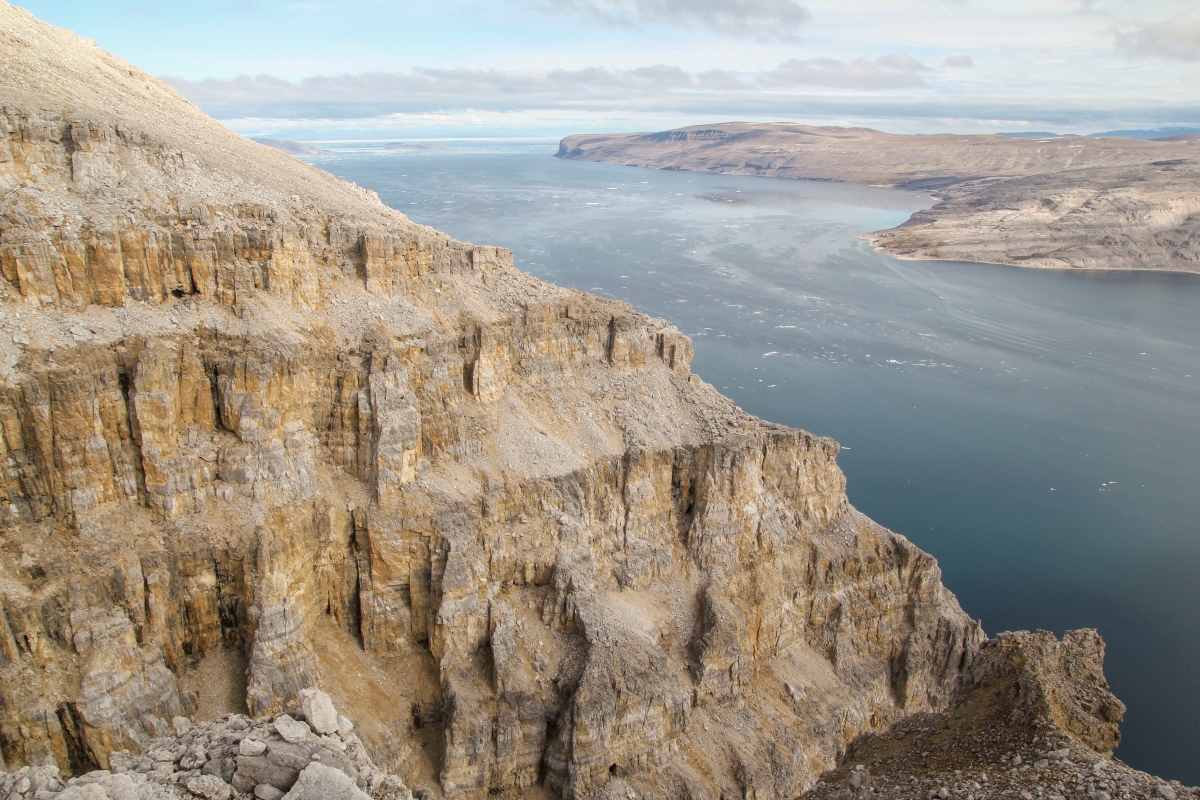When the World Turned Green: Age of Plant Photosynthesis Revealed

Ancient rocks from a remote Canada island contain the oldest algae ever discovered.
The samples, found on Canada's Baffin Island, also reveal roughly when plants had the components necessary for photosynthesis, a new study finds.
The finding reveals that Bangiomorpha pubescens, the oldest known algae on Earth, is more than 1 billion years old. Working backward, the researchers figured out that algae could likely harvest the sun's energy through photosynthesis about 1.25 billion years ago. [Photo Timeline: How the Earth Formed]
"I think it's pretty spectacular that this fossil is almost identical to red algae [one of the oldest groups of algae that still exists today], and we have shown that it is over 1 billion years old," said study lead researcher Timothy Gibson, a doctoral student in the Department of Earth and Planetary Sciences at McGill University, in Canada.
Earth's air
When a plant photosynthesizes, it uses sunlight to fuel a reaction between water and carbon dioxide, producing carbohydrates and oxygen. Bacteria have been photosynthesizing since at least 2.5 billion years ago, but B. pubescens is the first known example of a eukaryote that could photosynthesize. (Eukaryotes are organisms, such as plants, some algae and animals, whose cells have a membrane surrounding the nucleus and other organelles that are inside them.)
"Prior to about 2.5 billion years ago, there was essentially no oxygen in the ocean," Gibson said.
Primeval bacteria helped change that. "This early photosynthesis is responsible for the very earliest atmospheric oxygen," Gibson said.
Get the world’s most fascinating discoveries delivered straight to your inbox.
However, there was more uncertainty when it came to more complex organisms' ability to photosynthesize.
Narrowing range
Researchers originally published dates for B. pubescens in 1990 in the journal Science, stating that the algae — which sported the first widely accepted evidence for photosynthesis in plants (which includes algae) — was between 1.2 billion and 720 million years old.
But this time window was vast, so in the current study, Gibson and colleagues narrowed it by collecting and dating new samples of the black shale found in rock layers around the algae fossils. Their new analysis showed that B. pubescens lived between 1.06 billion and 1.03 billion years ago, with its most likely age being 1.047 billion years old, Gibson said.
After the researchers determined the age of B. pubescens, they used a molecular clock analysis — that is, a computer model that uses rates of genetic change to calculate evolutionary events — to figure out when photosynthesis likely began in eukaryotes.
The analysis suggests that "1.25 billion years ago, a complex but microscopic organism 'swallowed' a simple photosynthetic bacterium and gained its photosynthetic powers," Gibson told Live Science in an email. "It was then able to pass the DNA that codes for photosynthesis down to its offspring, and now, essentially all modern plants use the same organelle — the chloroplast — for photosynthesis."
However, although B. pubescens has helped establish when eukaryotes began to photosynthesize, it's still unclear when Earth's oxygen levels rocketed to modern levels, Gibson said.
"The question of when oxygen reached anything like modern levels is a topic we are still trying to pin down, but it likely wasn't until closer to half a billion years ago," Gibson said.
The study was published online Dec. 8 in the journal Geology.
Original article on Live Science.

Laura is the managing editor at Live Science. She also runs the archaeology section and the Life's Little Mysteries series. Her work has appeared in The New York Times, Scholastic, Popular Science and Spectrum, a site on autism research. She has won multiple awards from the Society of Professional Journalists and the Washington Newspaper Publishers Association for her reporting at a weekly newspaper near Seattle. Laura holds a bachelor's degree in English literature and psychology from Washington University in St. Louis and a master's degree in science writing from NYU.


